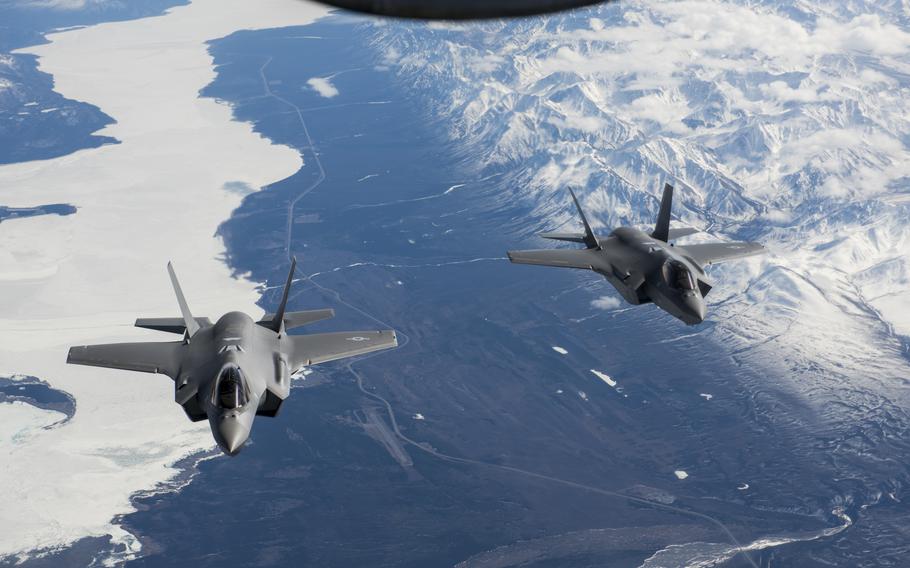U.S.
Fighter jets intercept Russian planes near Alaska for 2nd time this week, NORAD says
Stars and Stripes February 16, 2023

Two F-35A Lightning II aircraft fly over the Alaska Canada Highway in April 2020, en route to their new home at the 354th Fighter Wing, Eielson Air Force Base, Alaska. (Adam Keele/U.S. Air National Guard)
WASHINGTON — U.S. fighter jets were scrambled Tuesday to intercept Russian warplanes flying near Alaska’s coast for the second consecutive day, military officials said Thursday, emphasizing the Russian aircraft posed no threat to the United States.
North American Aerospace Defense Command, or NORAD, detected and intercepted four Russian aircraft — two TU-95 BEAR-H bombers, a SU-30 fighter aircraft and a SU-35 fighter aircraft — in the Alaska region on Tuesday, just one day after a similar intercept occurred near Alaska, the Pentagon said. Officials said the Russian planes remained in international airspace and operated professionally.
Such intercepts are fairly routine, the U.S. military said.
“Two NORAD F-35A fighters intercepted the Russian aircraft,” NORAD said in a statement. “Supporting NORAD aircraft included two F-16 fighters, one E-3 Sentry [airborne warning and control system aircraft] and two KC-135 Stratotankers.”
The Russian planes were in no way related to incidents in which U.S. fighter jets shot down a Chinese surveillance balloon and multiple unidentified objects over U.S. and Canadian airspace, Pentagon officials said. The Air Force shot down aerial objects on Friday off Alaska’s coast, over Canada’s Yukon territory on Saturday, and over Lake Huron near Michigan’s coast on Sunday.
White House and Pentagon officials have released few details about those incidents. However, they have said the objects hadn’t posed a physical threat and were shot down because they could have impacted commercial air travel.
The sudden uptick in such aerial incidents is likely the result of retooled radar efforts over North America that NORAD has instituted since the Chinese spy balloon crossed over the mainland United States two weeks ago. It was shot down off the South Carolina coast. Military and civilian search teams have been sifting through the large debris field to learn what the balloon was carrying.
The Tuesday intercept was at least the second one in 2023. On Monday, two NORAD F-16 fighter jets intercepted two Russian bombers and two fighter jets off Alaska’s coast in a similar incident. As with Monday’s intercept, the Russian plans Tuesday remained outside of U.S. sovereign airspace, the Pentagon said.